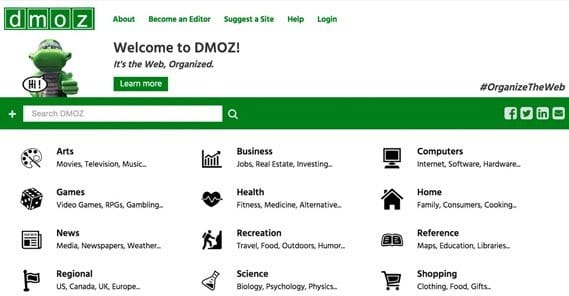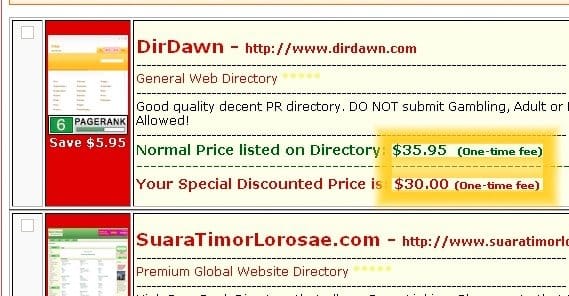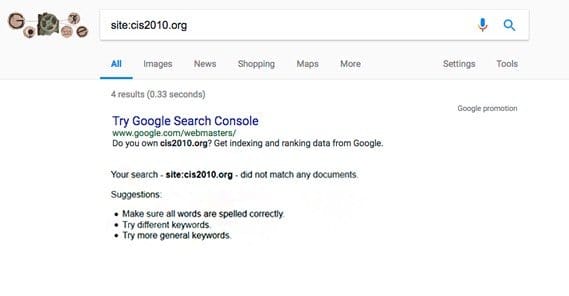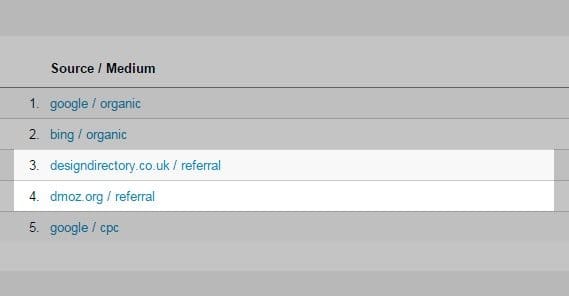Are Directory Submissions Worth The Money and Effort?

Directory submission is one of those SEO techniques that has existed practically since the dawn of SEO, and that has a rocky history in terms of value. There are always holdouts who think it has value no matter the quality of the directory. It’s arguable that some of the more high profile directories are perfectly fine, while others might not do as well.
As with any SEO technique, the value comes down to the implementation. Directory submission alone isn’t going to kill your site, if you do it properly. However, it’s one of those dangerous tools that can easily come back to wreck your site if you go about it the wrong way.
A Wide Range of Quality
The biggest determining factor for directory submission schemes is the quality of the directories you’re using. There are, without exaggeration, thousands of link and site directories on the web. Most of them are directories for individual blog posts, though some of them are for specific types of content – infographics, videos, galleries – and some are for sites as a whole.
Picking the right directories is pretty much 100% of the determining factor whether or not you get any value out of them. Here are some elements you should look at.
- What the industry of the directory is. The closer the industry is to yours, the better off you will be. For example, if you write a beauty blog, you might submit to the BlogHer network. You might want to avoid a “directory” that is more of a side business, like Beautylish. You would want to avoid an overly generic list like Top of Blogs, or off-industry directories that might otherwise work for a different site, like Technorati before their directory disappeared.
- The quality of the directory as a whole. Some directories just list anything that comes their way, while others have strong filtering in place so that only the best quality content is displayed on their site. You’re looking for the latter. If the directory is showcasing a lot of low quality content, do you want to be seen with it? Do you want Joe’s Spam Blog to be your neighbor? You can also use Moz or Majestic to analyze their links and pull metrics like PA and DA for them.
- If the directory is indexed in Google. If the directory itself isn’t listed in the Google search results, why would you want your link on it? The directory won’t be getting much if any traffic, and the links are obviously not indexed because the directory itself isn’t indexed. You can check this by running a site:www.site.com search in Google.
- If the sites submitting to the directory are high quality. You want good neighbors you can be proud of sharing space with. Technorati is a good example of this; the sites they list are generally at least of middling quality. Low quality and spam garbage are filtered out. Any directory you think you might submit to should have at least that minimum level of quality in their content. Like the directory quality, you can look up metrics like DA and PA for the sites and make sure they’re something better than pure crap.
- If the sites submitting to the directory are indexed in Google. Take a moment to look at some of the sites being promoted by the directory. Are they worthwhile? Are they indexed in Google search? Use the same site search scheme to see if indexation is available. If the directory is serving a lot of links to delisted sites, you might wonder if there’s something they all have in common. Hint: it’s the directory. Don’t use it, it’s a trap.
- If there’s a fee for submitting to the directory, or being ranked highly in displays. Paying money for a submission is very much like paying money for a link, which means you need to be very, very careful if you’re using it for SEO purposes. More on this in the next section.
The point is, directories are minefields full of possible reasons to not use them. If any directory looks even slightly objectionable, don’t use it. At best, the links you post will be completely valueless and you won’t get much or any traffic. At worst, the traffic will be fake and can get your monetization banned, while the links hurt your SEO. It can be simply devastating, especially if you paid money to get the directory link in the first place.
Where do you even find directories? You can search for them quite easily. Something like “marketing directory” in Google will get you a lot of results. You can also look at various industry blogs for lists of directories, like this one or this one. Once you have a list, you can then begin to vet them.
The Cost of Directory Submission
There are two costs associated with directory submissions; time and money.
On the time front, you have to spend time finding the directory, and more time vetting it to make sure it’s actually valuable to make use of. The longer you do this, the larger your stable of potentially good directories will be, and the less time it takes to vet a new one. The initial investment is high, but it gradually drops or disappears altogether.
On the money front, there are a few ways a directory might try to charge you. Some of them have payments required to buy an account you can then use to post links all you like.
Some of them have tiered accounts with limitations, requiring higher cost accounts for better positioning or more links per month. Some of them have monthly fees. Some of them operate on a credit system; buy credits to post links, run out of credits and your links stop displaying. Some of them are free to submit to, but have paid promotion for links, so if you want any preferential placement, you need to pay.
Frankly, I find pretty much all of these to be scams. I can virtually guarantee you that the links you get will be valueless for SEO, which I’ll discuss next.
The Value of Links for SEO
The SEO value of a link comes from a few factors.
- The relevance of the linking site to the linked site.
- The overall value and ranking of the linking site.
- The placement of the link on the linking site.
- Whether or not the link is followed.
Each of these has an issue with directories.
For number 1, often times directories are not related to the sites they link to. A lot of directories are generalist, so they have broad categories for various industries and hundreds or thousands of sites they link to. They also have relatively little content themselves, which means they themselves aren’t relevant to anything. It’s like getting a link from a completely unrelated homepage; the link isn’t going to be worth much.
For number 2, most directories aren’t ranked very highly. A site is ranked based on its content and the links that point to it. Directories can somewhat game the links, but they rarely bother to produce much in the way of content, so they’re going to have little value themselves as sites. The oldest and best directories are still not that valuable compared to a good quality blog.
For number 3, directories are just that; directories of links. They don’t have valuable placements, because a valuable placement is in content. When the link itself IS the content, the “content” doesn’t have much value, so the links don’t have valuable placement.
For number 4, most directories are nofollowed. This is specifically due to some Google changes in the past that nuked directories that posted followed links, specifically those that charged for followed links. Google doesn’t want money to influence search results so directly, so they hurt those directories.
Let me emphasize one thing here: directory links are almost always nofollowed, which means their SEO value directly is zero. A nofollowed link is, by definition, nonexistent as far as SEO ranking is concerned.
Other Value from Directory Submission
Keeping the above in mind, the primary value you can get out of a directory is through traffic. Traffic can be valuable in that it can convert, and it can be valuable in that the people who visit your site might find something they like enough to link to themselves.
This is one area where a directory technically has the advantage, in that the majority of the readership of a directory is in webmasters who have sites they want to promote. This means you can get a lot of links from a comparatively small audience.
The thing is, think about your process. You’re viewing a directory to see if it’s valuable to you. You don’t care what sites are on it, and probably don’t even visit them. There are very, very few people on directories that actually click and read the blogs in those directories. Those that do are generally incentivized in some way and are only giving you token attention.
The value of the traffic coming from a directory is near zero. In fact, many directories have a lot of traffic themselves but very little referral traffic.
The only possible directories with good, valuable traffic, for that matter, tend to be hyper-local. You can read more about those here.
The Slow Death of Directories
The fact is, there are people who will argue day after day that directories can be valuable. They will say they’ve used them in the past and had good results. The thing is, there are three types of people who make this argument.
- People who used directories in 1995 and think they’re still good.
- People who use every black hat technique they can find and think regularly fighting penalties is the natural ebb and flow of marketing online.
- People who run directories and whose livelihood depends on their directory doing well.
These days, directories are dying. I feel rather comfortable in saying that, outside of hyper-niche and hyper-local directories, almost every directory will be dead or dying by 2020.
Want some evidence? Keep in mind that marketing and tech blogs are some of the most likely to use directories, which means that directories focused on those niches should be thriving. Now think of the top two directories you see mentioned in every directory article on the web; DMOZ and Technorati.
Technorati’s blog directory disappeared in 2014. These days, the site looks completely different, and has a different sort of content. It’s also not nearly as well populated or as interesting, so its traffic has dropped significantly.
DMOZ shut their doors officially two months ago. They lasted 19 years, valiantly trying to organize the web via one huge directory, but it just didn’t work. The website itself no longer functions, though the registration is still kept by AOL to prevent someone trying to replace it.
Additionally, Google has long ago called out directories as part of their page on link schemes. They say “low quality directory or bookmark site links” are bad for your site, but when was the last time you saw a directory that wasn’t frankly pretty bad? It’s been a while, as far as I’m concerned.
Directories are dying, and soon they will be dead. Personally, I say good riddance. They’re an outdated technique, and there was nothing worse than searching for a good site only to find directories listing mediocre sites.
 ContentPowered.com
ContentPowered.com










Thanks for sharing this useful information on investing money over directory submissions. I’d rather not invest on it.
I was so close to investing money on directory submissions thought it’ll get me more backlinks. After reading your article , I wouldn’t go for it.
Although the site seems to be penalized it remains indexed, as evident in the screenshot below of a search for the site URL.